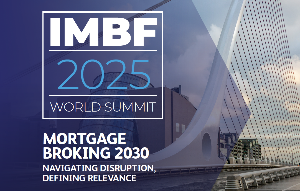ANZ has released its latest Property Focus report which notes the future direction of mortgage interest rates is not clear cut at present.
The situation is complicated by global funding costs.
The bank’s chief economist, Cameron Bagrie, said there are two competing influences that will likely impact on the direction of local mortgage rates from here.
Accepted wisdom has it that additional OCR cuts from the Reserve Bank could see mortgage interest rates fall further, but the under-appreciated newbie factor is that increases in global funding costs are pointing to higher mortgage rates, he said.
“Banks are less reliant on offshore funding than they were prior to the GFC, but New Zealand is still a savings-deficient nation.
“The longer global funding pressures persist (and it is likely they will), the more likely it is that they translate into rising deposit rates and subsequently mortgage interest rates.”
However, while higher funding costs could put pressure on borrowing rates, there are some mitigating forces that could offset the impact of this on domestic mortgage rates.
These include the potential for further OCR cuts and the fact that New Zealand’s banking system holds capital and liquid assets in excess of its regulatory requirements.
Even if new mortgage rates were to move up in short order it would take time to flow through into average borrowing costs for the household sector, due to the lagged impacts of a lower OCR and borrowers rolling off higher fixed rates, Bagrie said.
ANZ’s analysis suggested that average borrowing costs are likely to continue falling over the next few months, even if new borrowing rates were to increase modestly overnight.
In the bank’s view, higher funding cost pressures are a strong argument for the Reserve Bank to cut the OCR as an offset.
This is one of the major reasons ANZ now expects the Reserve Bank to make a further 50bps of OCR cuts this year.
Bagrie said that call reflects a wider array of factors than funding cost pressure alone. These include inflation trends, moderating growth prospects and a wobbly global scene.
But he added that central banks should be wary of pouring too much more on the housing market fire as inevitable corrections can be destabilising.
“So while it’s convenient to say higher funding cost pressures should be offset by OCR cuts to keep actual borrowing rates stable, it’s much more complicated than that.”



